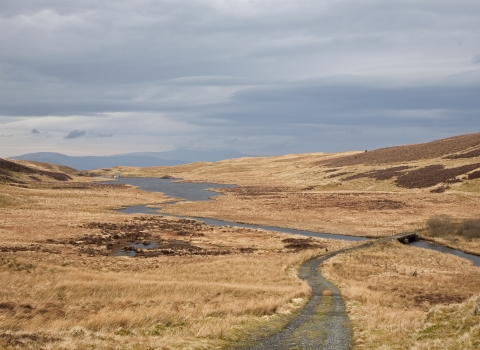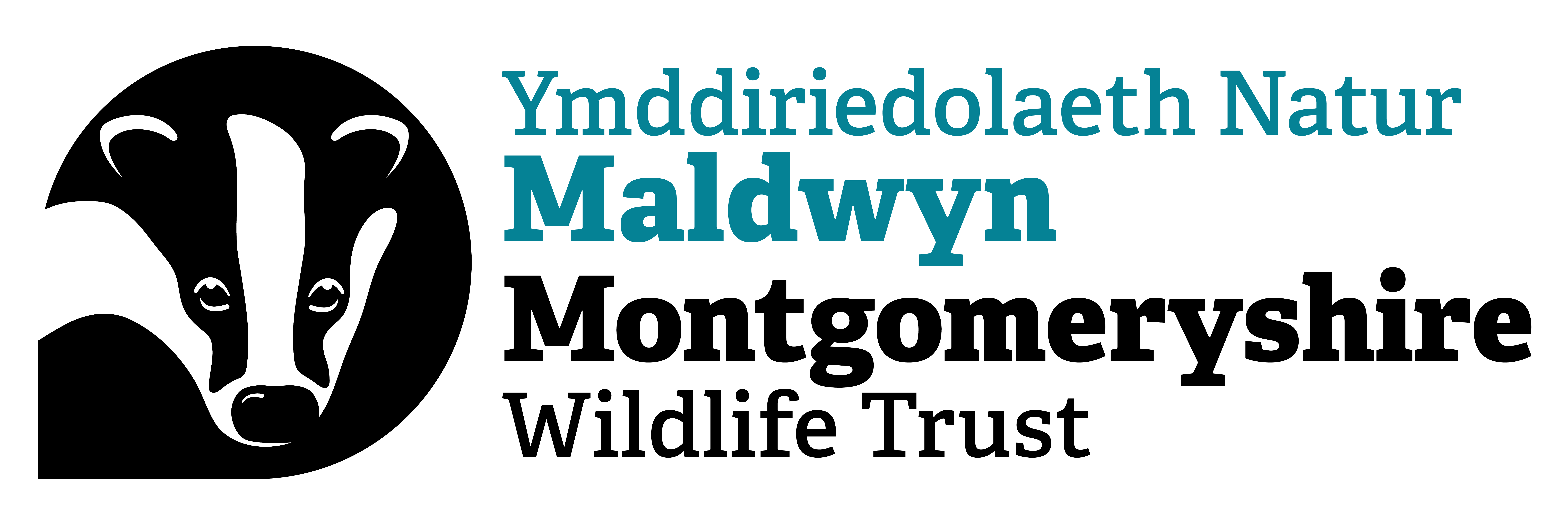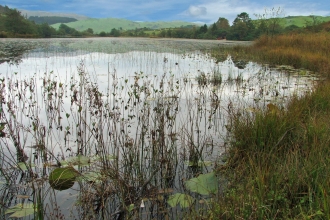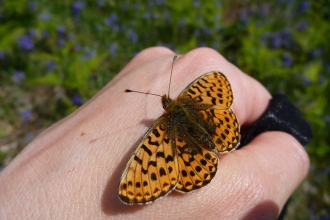
Peaty pool in bog moorland, Cambrian mountains © Peter Cairns/2020VISION
Climate & Ecological Emergency - what we're doing
Climate change is causing great stress to Montgomeryshire's wildlife. MWT is, and always has been working on the ground to protect and restore nature. Addressing climate change is a key component in this and restoring nature helps to reduce the impacts of climate change too.
Leading by example
In spring 2021, we opened pioneering, climate-positive visitor hub, Dyfi Wildlife Centre at our Cors Dyfi Nature Reserve (using grants from the National Lottery Heritage Fund and Welsh Government, and public donations). Every aspect of the design was planned to ensure the centre would be as close to carbon neutral as possible; it has been built with local timber and recycled/reclaimed materials, while clean energy is generated thanks to a huge solar array and ground-source heat pump.
Since it was first built, Dyfi Wildlife Centre’s eco credentials have been further enhanced by improvements to its energy-generation and the gradual addition of other climate-friendly facilities. Today the centre boasts enough energy storage to keep what it exports from the Grid to the bare minimum; it generates far more clean energy than it needs – enough to power around 10 houses for a whole year – and receives payment for what it imports to the Grid. It also has around 15 solar-powered fast EV chargers in its carpark, several e-bike chargers and its own electric vehicle. Dyfi Wildlife Centre is a shining light of sustainability in Wales, and others are looking to what we have achieved as inspiration.

Llyn Cwm Byr in low sun
Pumlumon Project
For over 15 years, the Pumlumon Project has been working on a landscape-scale to tackle the climate & ecological challenges of the modern world. By working with the local community, we have been able to store carbon & flood water, as well as reconnecting & recreating habitats and bringing back wildlife,
Of course, Pumlumon is not the only place where we have been managing, restoring & creating natural habitats. We have 18 nature reserves and work with a large number of private landowners, organisations and public bodies on hundreds of hectares of additional land. Only by working together can we hope to create a Nature Recovery Network to benefit us all.
You can read more about some of this work by clicking on the links below.
Addressing our own footprint
From staff travel and running the Welshpool office and Dyfi Wildlife Centre, to powering our operations and even our conservation work, we recognise that our activities can also have an impact on the climate crisis. As part of our ambition to reach carbon net zero by 2030, we, along with the wider Wildlife Trusts movement, have committed to calculating our individual annual carbon footprint since 2019/2020, and are exploring how best to calculate the carbon sequestered (stored) by our nature reserves. Alongside this, and most importantly, we are working on ways to reduce our emissions wherever we can.







